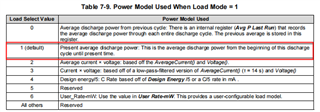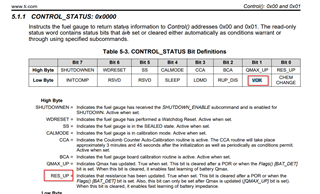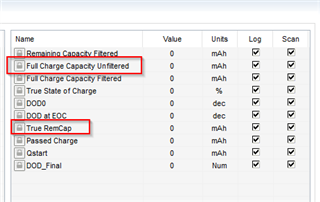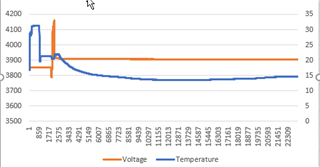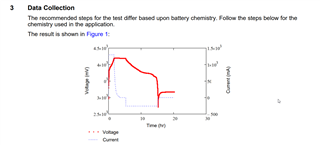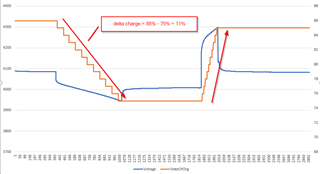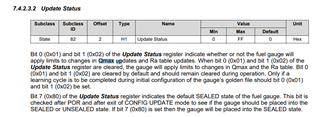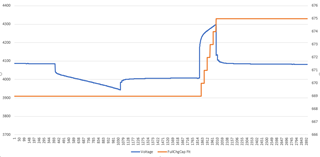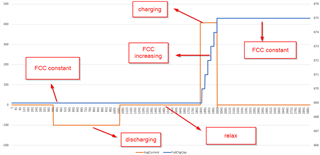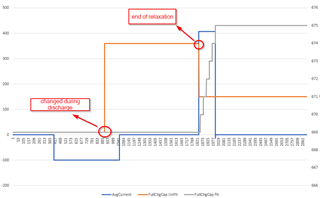Other Parts Discussed in Thread: BQSTUDIO
hello,
之前提问过“Batter does not charge,does not discharge,voltage drops,RM value rises"问题,按照提示周期发送SMOOTH_SYNC指令后,运行了7天以上,没有再出现RM值持续自增的现象。
I asked the question "Batter does not charge,does not discharge,voltage drops,RM value rises" before, after sending SMOOTH_SYNC command according to the prompted cycle, it has been running for more than 7 days, and there is no more RM value increasing continuously. The RM value does not increase continuously.
呈现的现象如下图:
The phenomenon presented is shown below:
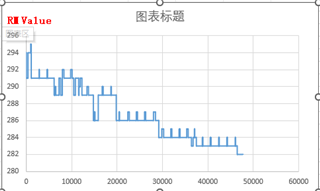
RM值整体是呈下降趋势的,但中途RM值会有回升。这属于正常现象吗?
The RM values are trending down overall, but midway through the RM values will pick up. Is this normal?
Also.
1, SMOOTH function is on by default, why do I still need to send SMOOTH_SYNC command periodically?
2, "This will fix the issue of slow creep due to accumulated charge measurement errors." don't quite understand the meaning of this sentence?
My understanding of accumulated charge errors is: the battery is Relax for a long time, the FuelgaugeIC is in Sleep mode, the power consumed by the FuelgaugeIC during the Sleep mode is not measured, and there will be accumulated charge errors.
Is my understanding correct?
3, based on the understanding of 2, if the accumulated charge measurement error is solved, shouldn't the RM value drop more (e.g.: 290--->287), why does the RM value rise?
另外,
1、SMOOTH功能默认是开启的,为什么还需要周期发送SMOOTH_SYNC指令?
2、"This will fix the issue of slow creep due to accumulated charge measurement errors."不太理解这句话的含义?
我对累积电荷误差的理解是:电池长时间静置,FuelgaugeIC处于Sleep模式,sleep模式期间FuelgaugeIC消耗的电量没有被测量,此时会有累积电荷误差。
我的理解是否正确?
3、基于2的理解,解决累积电荷测量误差的话,RM值不是应该降的更多吗(例如:290--->287),为什么会出现RM值上升的现象?




